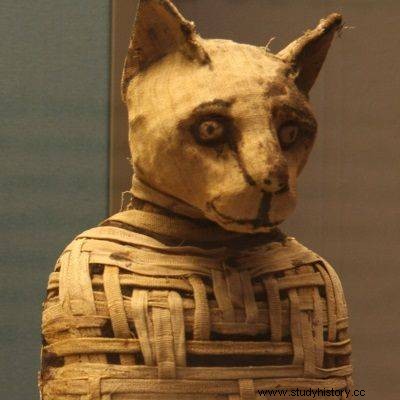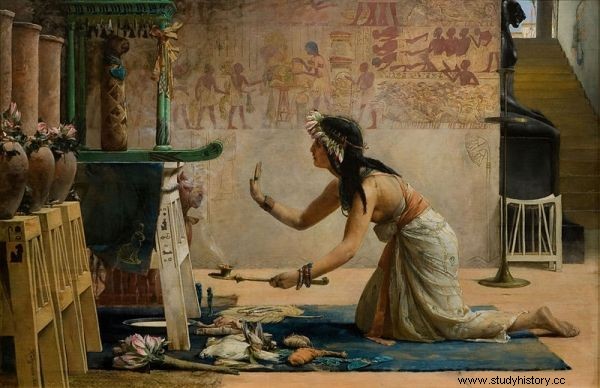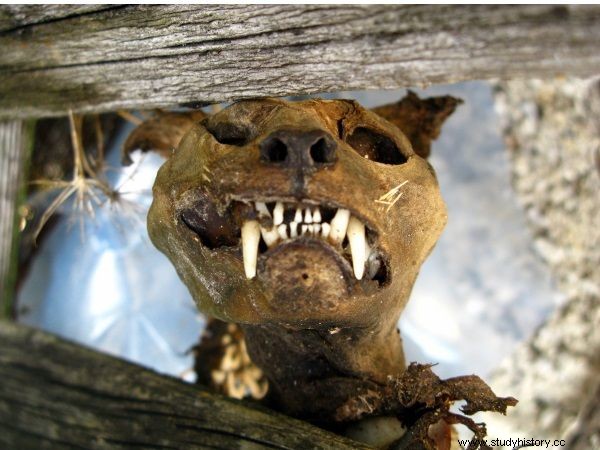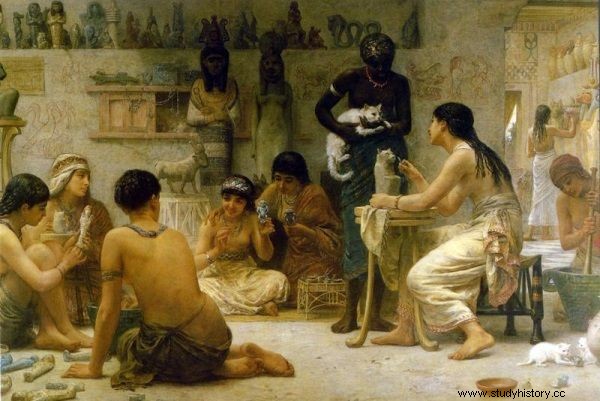Magic intermediaries between the worlds of the living and the dead. Cats in ancient Egypt were extremely respected, but it did not guarantee them a peaceful life. They were sacrificed as blood sacrifices, and after hundreds of years their mummies became ... a coveted soil enrichment!
When we hear the word "mummy", we immediately imagine Pharaoh Tutankhamun, or possibly a pharaoh in the movie chasing Brendan Fraser. But did you know that the Egyptians mummified not only people but also ... cats?

Cat mummy from the collection of the British Museum (photo:Magnus Manske, license CC ASA
They were not doing it at all to obtain medicine from animal mummies but rather because of the extremely important position of cats in Egyptian religion. A position personified by the goddesses Sekhmet and Bastet. Paradoxically, however, the cat cult led to the deaths of thousands of innocent animals.
Bred to die
The oldest cat mummies come from the times of the 12th Dynasty, i.e. nearly four thousand years ago. Cats, like other sacred animals worshiped by the Egyptians, were considered powerful symbols of life. Embalming them - and thus making them similar to the first sacred mummy or Osiris - made them intermediaries between the worlds of men and gods .

Egyptian priestess worshiping the cat-god in a 19th-century painting.
It was also a gesture of respect for these animals, because usually rulers and dignitaries were mummified. Cats were to convey prayers in the same way Christians attribute to the intercession of the saints.
The cats' magical attributes, however, were more of a curse than a blessing. Animals intended for communication between the worlds were bred solely for that role - and then sacrificed as a bloody sacrifice.
For many poorer pilgrims, keeping future cat mummies was the only option for making a sacrifice, because offering the precious bronze statues was simply not an option for their material status. However, the rich were also commissioned to mummify cats - for example, Prince Tuthmosis of the 18th Dynasty, who also provided the mummy with a beautiful sarcophagus. When creating exquisite cat mummies, their faces were painted black, or special cat masks were created.
Macabre business
Initially, cats were drowned, explaining that killing an animal was not to end its life, but to wake it up and free it from death. As you can guess, however, the practice quickly became distorted. The priests, who made a lot of money from the cat sacrifices, did not intend to worry too much about the breeding process - why would they make their work difficult? The cats were practically not fed and were kept alive for only 12 to a maximum of 24 months. This is confirmed by studies of cat mummies - they are almost always the remains of young animals, and even young kittens.

Cat mummy found in Mongessa, Italy (photo:Joadl, license CC ASA 3.0 Austria).
They were killed by breaking their backbones. The "highlight of the program" was the mummification itself - after removing the insides, sand or other material was put in their place so that the cat would not sometimes look too haggard. It was put in the correct position and bandaged, then dried in the sun (embalming with chemicals was also considered too expensive). This is how a real cat industry was created. With time, even the worries about the proper cat remains in the cat's mummy ceased to exist - scientists discovered the bones of not only other animals, but even humans!
Top class oriental fertilizer
Until the adoption of Christianity, the Egyptians managed to produce huge numbers of cat mummies, the largest clusters of which were in the cemeteries of Bubastis, Dendereh, Abydos, Giza and Saqqara. Madeline Swan, author of The History of Cats reports that archaeologists found thousands of cat mummies. So much has survived to this day - in fact, the ancient Egyptians sacrificed millions of them.
Mummification was still done in Roman times, but for completely different reasons. Now it was part of modern agricultural technology. Cat remains were believed to fertilize the soil. The ancient historian Pliny the Elder (1st century BC) also wrote that the ashes of these animals can ... reliably drive field mice away from crops.

Preparation of a figurine of a cat goddess in a 19th-century painting.
The story of cat mummies is not over there. As Madeline Swan explains, “The tradition of using cat mummies as fertilizer returned in a bizarre new form in 1888. An Egyptian landowner discovered 300,000 cat mummies on his land, 80,000 of which he sold to the British for £ 4 a ton - the ashes were supposed to fertilize the lands around Liverpool. As a result, even today British farmers find ancient jewelry and animal remains thousands of years old in their fields.
Due to the multitude of mummies, a few have also reached Poland - they can be seen at the Archaeological Museum in Krakow or the National Museum in Warsaw.
However, this is not the end of the horrors that befell cats at the hands of our ancestors. To this day, cat mummies are also found in the foundations of many buildings, especially in Great Britain. Perhaps some of them were there by accident, but more likely it was a kind of victim - supposed to bring happiness to the household, scare away rodents, and even trick evil powers (to take the cat instead of people).
Bibliography:
- Bob Brier, Egyptian Mummies , Warsaw 2000.
- Henk te Velde, A Few Remarks upon the Religious Significance of Animals in Ancient Egypt , "Numen", vol. 27, No. 1, pp. 76-82.
- Laurence Bobis, Cat. History and legends , Krakow 2008.
- Madeline Swan, Cat History , Krakow 2015.
- Margaret Howard, Dried cats , "Man", vol. 51, pp. 149-151.
